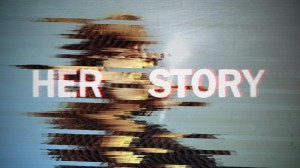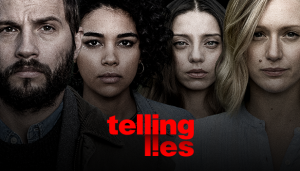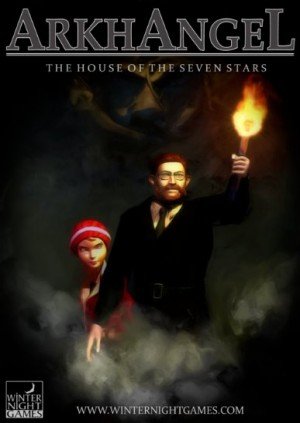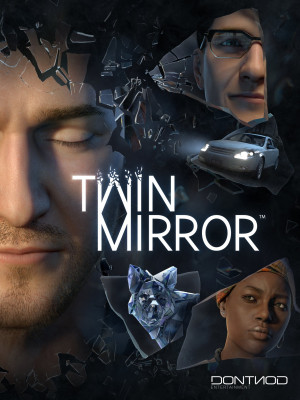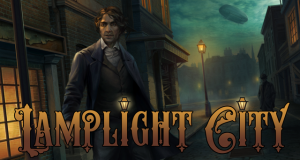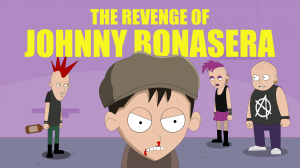Sam Barlow (Her Story, Telling Lies) – Part 1 interview - page 3
Sam: Having chosen to let people explore video non-linearly in Her Story somewhat naively, I kind of wandered into that idea. For Telling Lies it was very much having some perspective and going “well, the gameplay is about reading between the lines, exploring this video content; how do I do more of that? How do we dig deeper into that?” This is the next step up in terms of making the act of exploring a story through these videos as interactive and hands-on as we can. So you get this very unique way of exploring the content because you jump around a timeline in a way that is non-linear. Whereas Her Story was seven interviews over a course of a few weeks, this story takes place over about two years and you’re seeing clips across this entire span of the story. So you’re jumping around that, and within a scene itself you are moving forwards and backwards.
The fun in Her Story of inferring the context, of understanding the subtext of the scene, trying to figure out what was being discussed…Limited perspective. You get even more of that here, and the scrubbing really encourages you to dissect the performance. You just click or touch the screen to start scrubbing. The interface encourages you to freeze-frame almost, because you can move through this footage like being a video editor or something. You’re kind of scrutinizing it. It really encourages you to not only dig into the words being used, but further dig into the performance. Because the camera is untethered from a single interview room as with Her Story, now there is all this story and information stored in everything else you’re seeing. So you’re going to be seeing into the lives of these characters, you’re going to see where they live, seeing the locations they’re in, seeing how those change over time. There’s so much more information that you can absorb from that and stuff you can infer there.
 This idea of exploring story through video, to some extent consciously, some extent not, very much came from looking at games like the Silent Hill series, having worked on that and knowing how much fun it is to explore a 3D space, how atmospheric it is. Some of the thematic storytelling you can do by having the environment be meaningful. But ultimately, certainly in the classic survival horror model, if you needed to tell a story you were doing it through diaries, audio logs, cutscenes. With Her Story, I considered the emotional response I had to Gone Home. I’m attributing like 80% of that to the audio pieces, which if I remember correctly were not in their original dev plan and at some point the team realised they needed them to give you some connection. And Her Story to some extent was the thought experiment of: “What if I threw out exploring a cool house, a cool meat packing plant, a cool abandoned creepy school…What if I got rid of that 3D exploration and put all of the video game exploration into the audio log itself? Or video logs. What if I took the amount of freedom and choice and depth that you would have in that 3D space and put it in the actual story content?” I think Her Story proved that interesting idea, and by basing some of your exploration gameplay on the language that was being spoken, it created some richness that you wouldn’t necessarily have with the normal gameplay verbs and kind of made it accessible in an interesting way.
This idea of exploring story through video, to some extent consciously, some extent not, very much came from looking at games like the Silent Hill series, having worked on that and knowing how much fun it is to explore a 3D space, how atmospheric it is. Some of the thematic storytelling you can do by having the environment be meaningful. But ultimately, certainly in the classic survival horror model, if you needed to tell a story you were doing it through diaries, audio logs, cutscenes. With Her Story, I considered the emotional response I had to Gone Home. I’m attributing like 80% of that to the audio pieces, which if I remember correctly were not in their original dev plan and at some point the team realised they needed them to give you some connection. And Her Story to some extent was the thought experiment of: “What if I threw out exploring a cool house, a cool meat packing plant, a cool abandoned creepy school…What if I got rid of that 3D exploration and put all of the video game exploration into the audio log itself? Or video logs. What if I took the amount of freedom and choice and depth that you would have in that 3D space and put it in the actual story content?” I think Her Story proved that interesting idea, and by basing some of your exploration gameplay on the language that was being spoken, it created some richness that you wouldn’t necessarily have with the normal gameplay verbs and kind of made it accessible in an interesting way.
Ingmar: It’s funny you mentioned the interactive movie thing a bit earlier because I’ve had a certain fascination with those since the early ‘90s, but when I think of Her Story, I don’t really think of an interactive movie or an FMV game. It’s a game that uses live-action elements but it never feels like it’s using them for the sake of using FMV. In comparison, playing something like Uncharted 2 for the first time, which doesn't use Iive-action video, made me feel way more like, “wow, this is like a movie!”
Sam: Yeah, I think something I clung to was it’s still a relatively unique take on using video in a video game, in that 90% of the games that do that have traditional gameplay and they use their video as the content. And that creates problems, because the video does not have the fidelity of live 3D or sprites, but what Her Story does is go “no, we are watching videos. We’re not hiding that, but the mechanic is watching videos.” So we wanted to own the fact that we are watching videos, which instantly frees me up from having to create the idea that the video represents you as a protagonist.
There are a few examples, even something like Night Trap, for its cheesiness I respected the fact that its frame was you are watching video cameras. You are spectating. There’s another game that I’ve never played but I watched some Let’s Plays, and it wasn’t great, called Voyeur, which again was saying “look what is cool about video, what can it allow us to do”, which you couldn’t have done back then with 3D. But it leant into the framing that you are watching something through a camera. Whereas I think the less successful stuff says, "oh no, this is a traditional game; everything is happening in real time." Which the video can't hope to deliver on. Even something like Uncharted, which is very linear and cinematic, all motion captured animations, still has an amount of flexibility and timing that it can utilise because it’s real time 3D, right? Everyone’s going to do the same jump at the same point in the environment, but it will happen when they press the jump button, so it feels cool. You do that game with live-action, like Dragon’s Lair, or --
Ingmar: Gabriel Knight 2 or Phantasmagoria and so on...
Sam: Yeah, you will not have that real time fidelity. So I think it is very timely with Her Story because video was becoming a bigger deal – watching videos on our phones, we’re dropping videos into our social media. When my kids watch TV shows on Netflix, they don’t sit and watch 30 minutes of a TV show on broadcast like I would. They have an amount of freedom and agency and it’s already a more active thing. And that’s just the way everyone’s brains work now. If you are sat in a pub and a conversation topic comes up and it’s something you don’t know about or can’t quite remember instantly, everyone’s pulling out their phones and Googling and digging into things in a way that just wouldn’t have existed previously.
By thinking about what a true crime detective database weird video game looks like, Her Story accidentally side-stepped suddenly into something that made a lot of sense to people. They’re watching more true crime stuff on TV, they’re used to experiencing information in this multi-threaded, hyper-textual way through their devices. Everyone is Googling. It’s almost like a reflex action now. You have a question stuck in your head, boil it down to some keywords. So it was very fortuitous that it fell in sync with that.
I remember the first time I showed it in public, I had journalists say to me, “what made you think of revisiting the FMV genre?” and it hadn’t occurred to me that was what I was doing. I was like, “oh, I guess!” I was just being obsessive about police procedural TV shows and going down YouTube rabbit holes and thought “this could be a game.” So yeah, it’s a very different thing. It is funny though because I think even now if you talk to anyone outside of video games about interactive narrative, in their heads they still think choose your own adventure, they still say interactive movie, so there are some very fixed ideas of how these things might work that dominate everyone’s imagination.
(To be continued in Part 2)
Interview transcription provided by Richard Hoover, Joe Keeley and Shuva Raha.



